In my reckoning, the Goldenball Leadtree, Leucaena retusa, is the quintessential spring tree here in Central Texas. It’s striking green foliage, paired with cheery yellow blooms shouts spring! spring! spring! and its airy, graceful growing pattern, echos the joyful vibe that we all feel during spring.
Goldenball’s native range is only in Texas–primarily in Central Texas, but also to far West Texas and even into northern Mexico. For pollinators exclusively and for gardeners mostly, the fuzzy blooms are the key items of interest on this attractive tree. Fragrant and stunning, the blooms dot the tree for at least two months in spring, sometimes longer.

I like this shot as it demonstrates a flower in its prime, some blooms are which over-the-hill, and a bunch of bloom wannabes, gearing up for their time in the sun.
The leaves are small and oval, arranged bipinnately along an axis, and suggest a kind of transparency when highlighted by Texas sunshine. The flowers are about an inch in diameter, yellow when at their blooming peak, taking on an orangy hue as the bloom fades.
Sometime in February, depending upon the depth of our winter, the deciduous tree begins to show new life.
Foliage forms and unfurls, growing at a steady pace through February and into March. By the time the leaves are near a mature size, the bloom buds are developing. Initially they’re small, green, and spiky: green kush balls,
…that develop into fat, yellow kush balls.
As beautiful as the flowers are, I find the airy foliage just as attractive and it lasts the whole growing season. It never loses its spring green, either.
It’s a hopeful green.
My Goldenball is about 10 years old and probably 15 feet high. It prefers full-to-part sun, but mine only receives some dappled early morning sun, then an hour or two of direct sun in late afternoon. Because of shade, mine doesn’t bloom quite as much as it once did, but I’m still very happy with this beauty. It has an open, rangy quality that I like. It’s a vertical plant, but not huge nor dense, which allows it to fit in a small area without overwhelming or outgrowing the space. The Goldenball is interesting all year. While I have no pollinator-sipping-the-blooms photos (how did that happen?), large carpenter bees and my honeybees are grateful visitors during the March-April-May bloom time. Some sources report that Goldenball blooms on and off throughout summer, but mine is strictly a spring bloomer.
Summer and fall show the Goldenball Leadtree as a happily green, dry-loving small tree, perfect for an urban garden in a hot climate.
My Goldenball leeaans to the left, I suspect trying for as much sun as it can gather for itself, but I don’t mind that bit of quirkiness. Throughout the year and especially in summer, the fledging birds dash to this little bit of protective green, which sits not too far from the bird feeders. I’ve seen Carolina Wrens, Thryothorus ludovicianus, hopping along the slender branches, gleaning insects from the bark as they go, and during migration season, warblers zip to it for safety.
I like the Goldenball’s green glow. Notice how light and bright the green is on the Goldenball, versus the darker foliage on the Red Oak branch to the left and the Mountain Laurel, to the right.
By late summer, the Goldenball Leadtree–true to its legume heritage–develops seedpods, which hang, pendant-like, from the branches.
I let mine break open and drop, but thus far, I no seedlings have grown from the mother plant. Supposedly, Goldenball easily grows from seed, but mine remains seedling-less. I would love to have some baby Goldenballs to share.
Until there’s a hard freeze, the foliage remains on the tree, thinning a bit with consistent temperatures near to, but not below, freezing. A hard freeze will take care of that green business, leaving the tree a skeleton of its former self.

The now freeze-burned and dropped Goldenball leaves mix it up with the also frozen and dropped Red Oak leaves.
For those with deer in their landscapes, Goldenball Leadtree is not deer resistant, so browsing will happen, at least until the foliage is high enough that deer can’t reach it. Is that even possible? But for those who have cattle and aren’t growing it for this tree for its beauty, Goldenball is reportedly a good browsing plant.
I am happy to have a spot for this lovely little tough-as-nails native tree in my urban garden.
In spring:
Summer and Fall:
In Winter:
If you garden anywhere in Central to West Texas, Goldenball Leadtree is a charming, easy-to-grow addition to your garden.
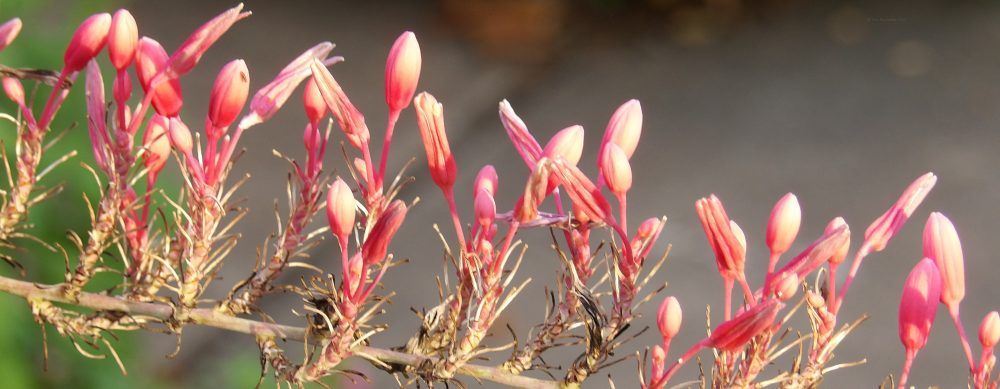

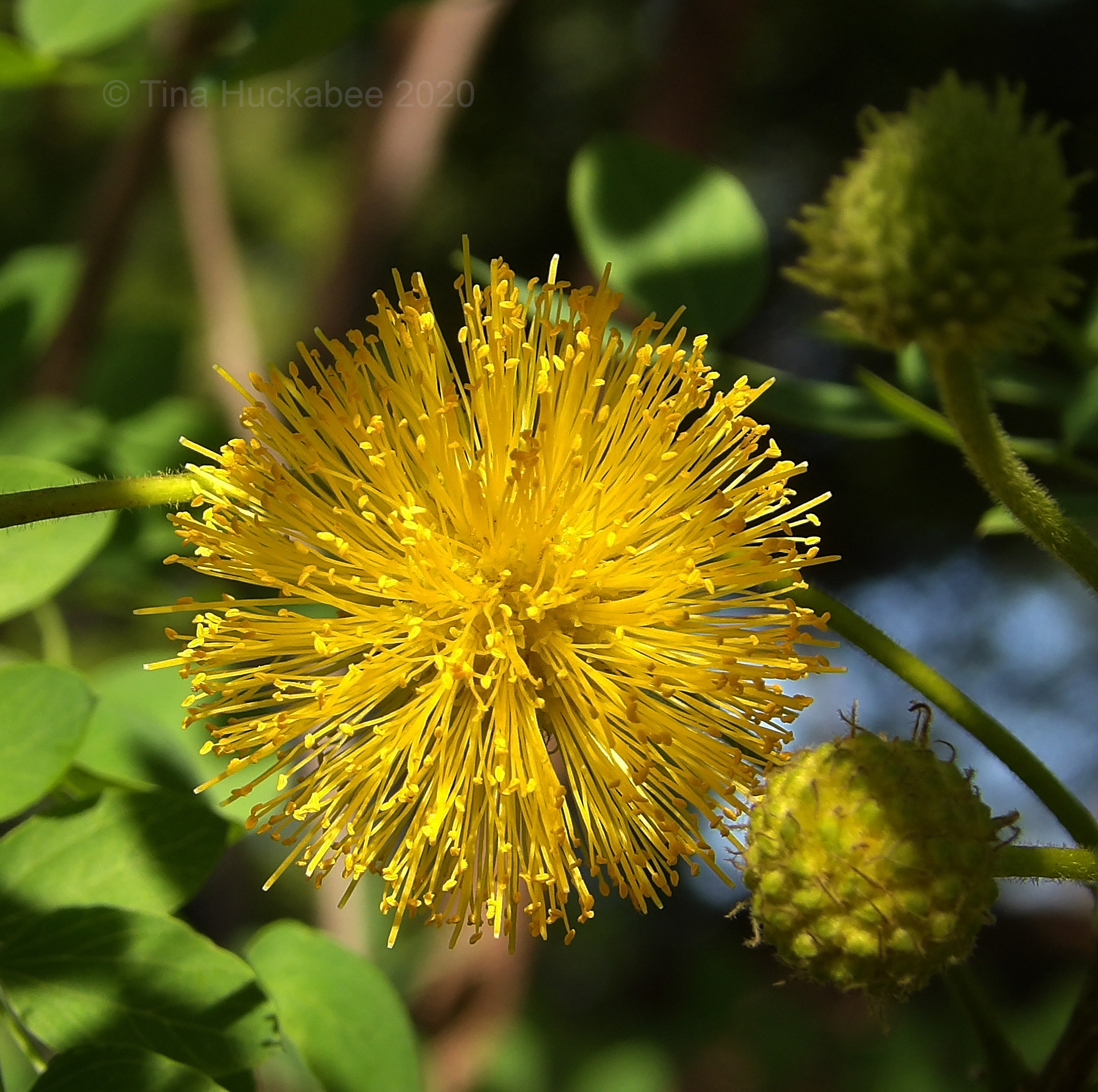
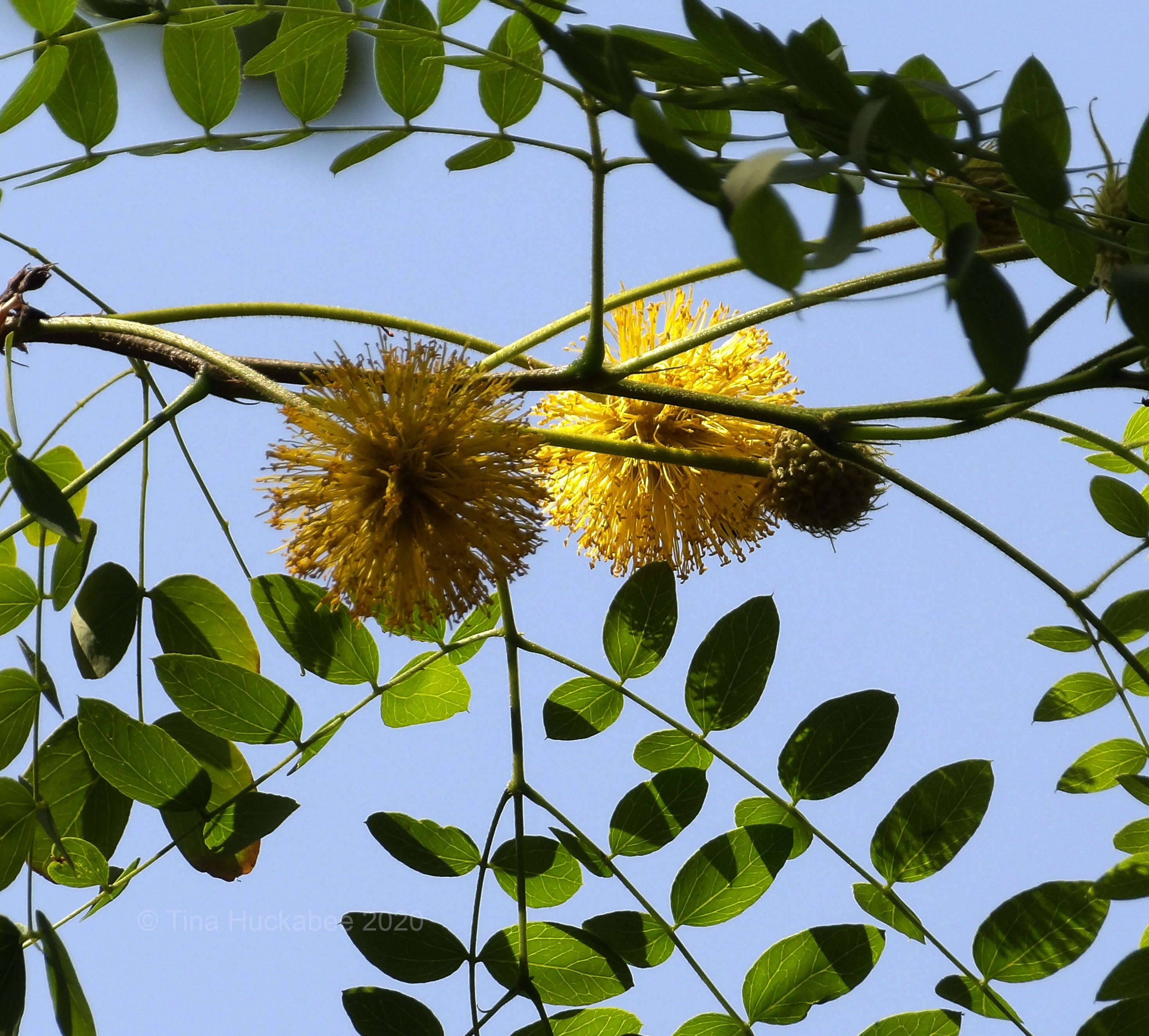
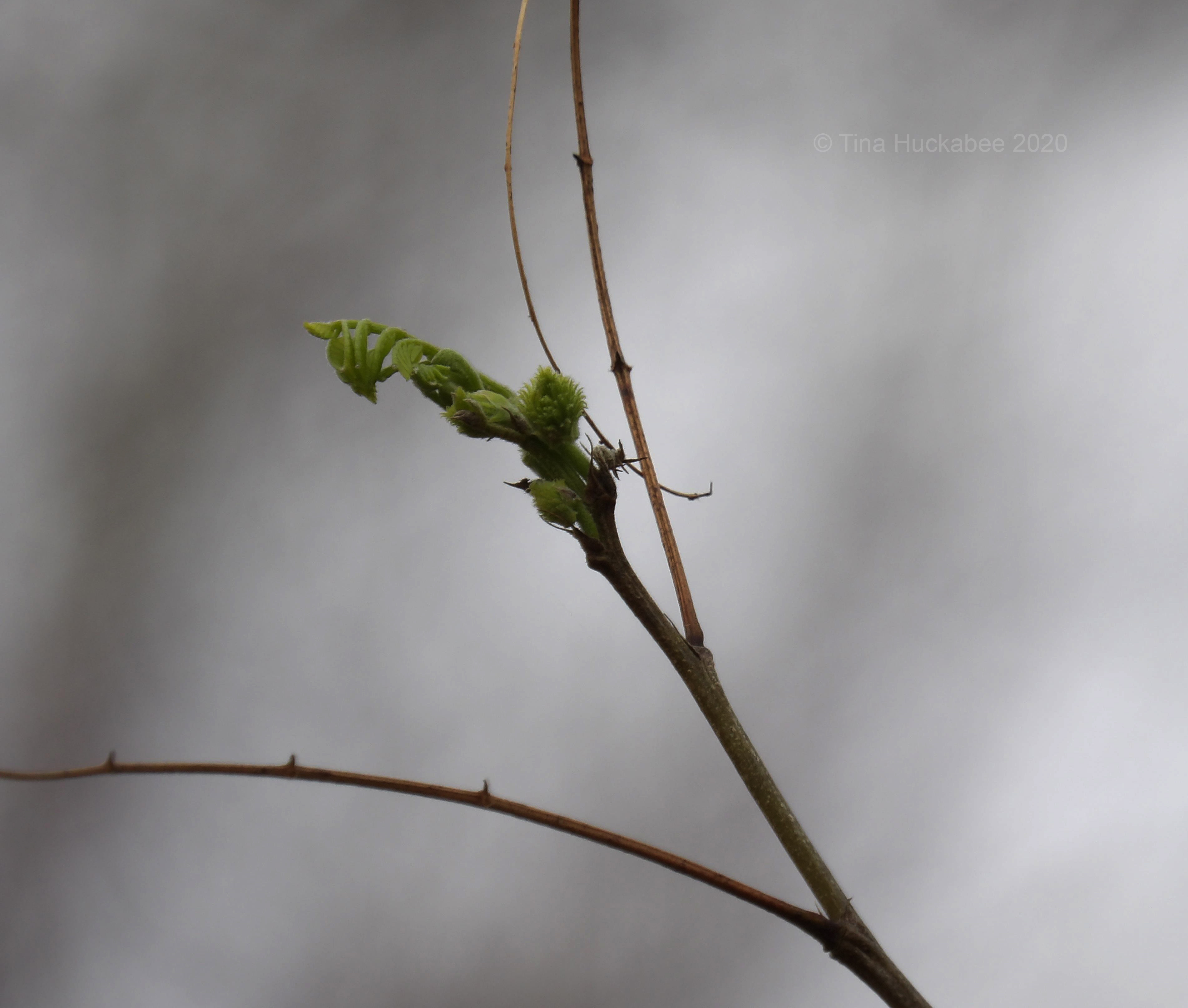












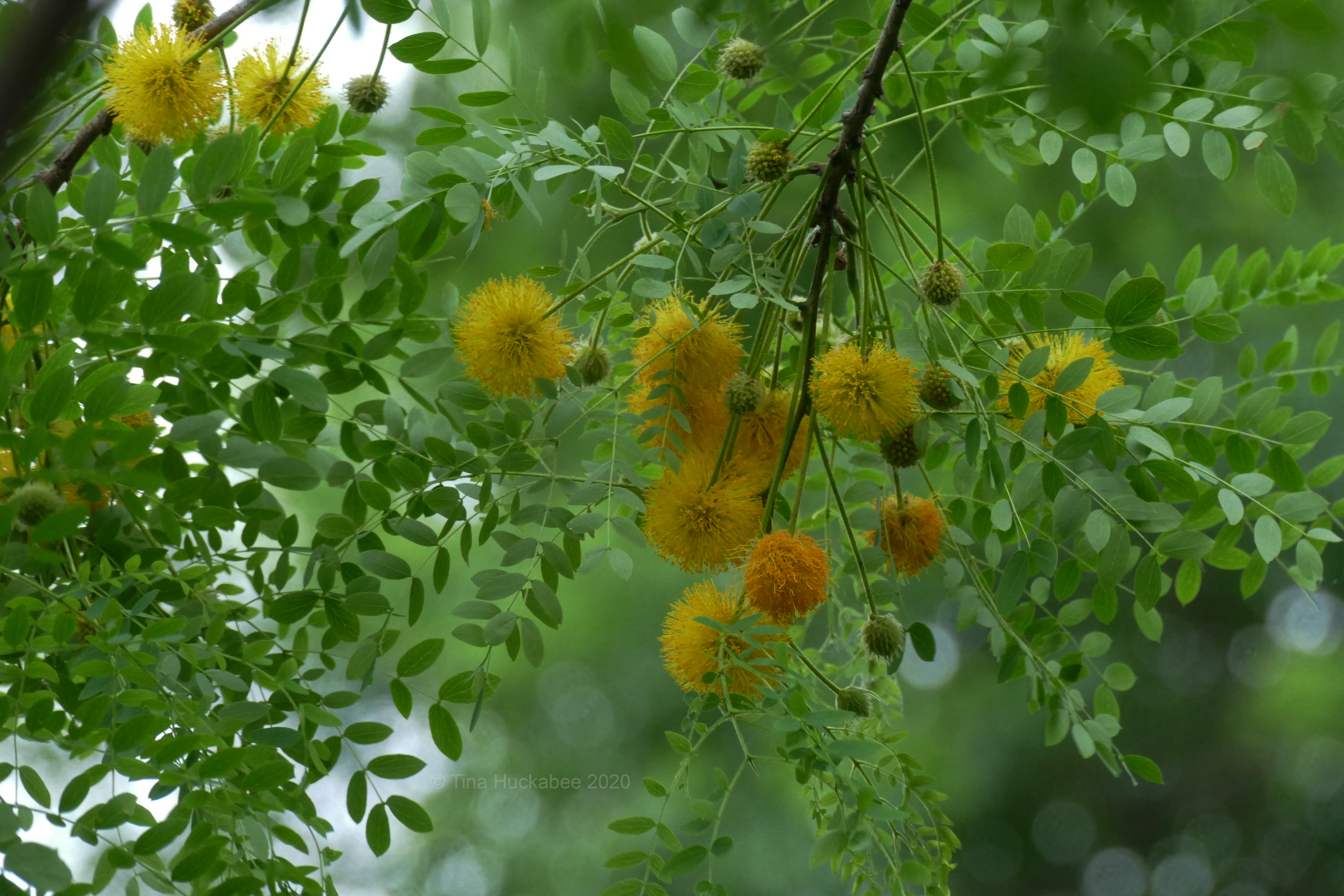
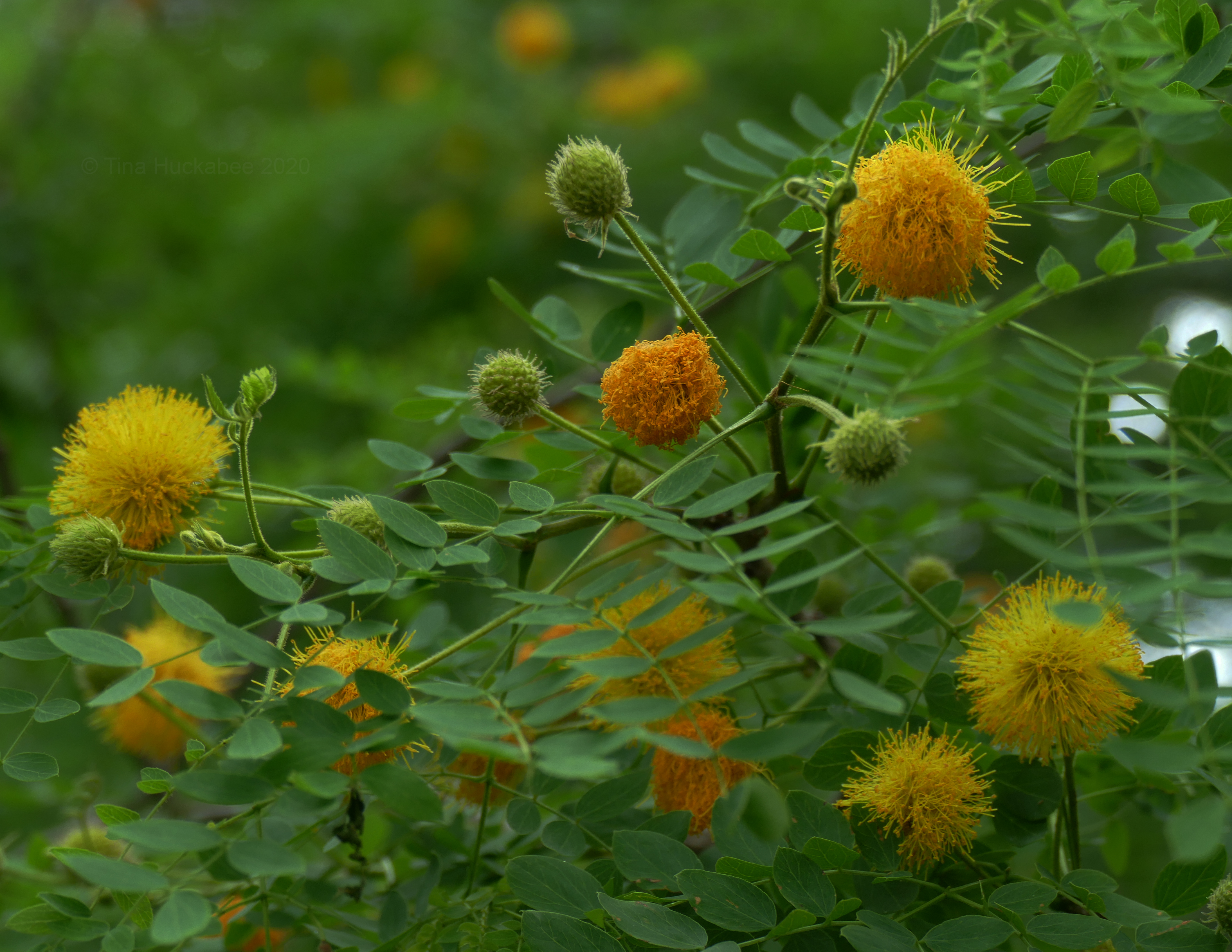



Great post!
I’m am now inspired to buy several at the FBG. NPSOT fall sale in Oct.
They should look great scattered along my nature trail.
LikeLike
Glad you enjoyed the post, Paula! You’ll love the tree–it’s beautiful and works in a natural or more formal setting. Have fun!
LikeLike
Is it one of the species that is considered to be a mimosa?
LikeLike
I’ve never heard this tree referred to as a mimosa.
LikeLiked by 1 person
It is such a generic term anyway that no one seems to know what the original ‘mimosa’ is.
LikeLike
Tony, see my reply to Tina. There’s another tree here called huisache, or sweet acacia, that’s also been known as a mimosa. It’s in the same family as Tina’s tree. I put in a photo of it.
LikeLike
When I saw it, I was sure it was huisache. I did some poking around, and found that the resemblance makes sense: both are in the Fabaceae. Huisache (Acacia farnesiana) also has been called Mimosa farnesiana. I don’t think I’ve ever seen this tree, but the huisache is pretty common — even down around some of the mid-coast bays. Here’s a photo of one out in the country, west of Gonzales. This is just as pretty — and I’ll confess I enjoyed the photo of the fall leaves as much as the photos of the flowers.
The phrase I didn’t know and had to look up was “kush ball.” Once I saw the photos, I recognized it from the checkout counter at Walgreens!
LikeLike
I forgot about Huisache and it’s way more common than the Goldenball. It’s also larger. I didn’t remember that it’s also called mimosa. I always think of the non-native as ‘mimosa’. Good catch, Linda!
LikeLiked by 1 person
This is even more confusing, since ‘Mimosa’ is actually a synonym for the genus name, rather than merely a generic designation. It might be an ‘official’ mimosa! I have heard of this tree, but have not yet made acquaintance with it. If I met it in Oklahoma, I did not know what it was. There were a few trees there like that.
LikeLiked by 1 person
I didn’t know what it was, either. I found an article that gives the origin of the name. Somebody who wanted to play a prank could sneak into your yard and hang some on your tree.
LikeLike
They’d have to be yellow kush balls though!
LikeLike
Having this tree in your yard has allowed you the luxury of being able to document its yearly cycle. How nice. The goldenball lead tree isn’t native in Travis County, and the only place I’ve ever seen one is at the Lady Bird Johnson Wildflower Center, where I’ve occasionally photographed the same tree for years. The long pods remind me of the ones that form on a mesquite, which isn’t surprising, given that both are legumes. The bicycle in a couple of your pictures seems incongruous; somehow I don’t imagine you use it to ride up the tree’s trunk or branches.
LikeLike
It was that very tree at the LBJWC that inspired me! I’ve seen it several times blooming (and many times, not blooming) and have always wanted one. It’s a small tree, even in ideal conditions, so it was a good choice for me.
The bicycle is my daughter’s, Shoshana. Shoshana died suddenly, at 13, in 2006. She loved riding (and many other things), so the bicycle is now part of my garden, though I’ve had it in various places over the years. But I don’t trundle up the tree with it. 🙂
LikeLike
I’m sorry to learn about what happened to your daughter. Now I understand the bicycle. I assume you chose her name because in ancient Hebrew it meant lily, and in modern Hebrew has come to designate a rose.
LikeLike
Thank you. Yes, I love that name and that it is a flower, well, even better.
LikeLike
Pingback: Feeling Spring | My Gardener Says…
Where might I buy one of these trees? Goldenball Leadtree?
LikeLike
I don’t know where you live, Rosalyn, but here in Austin, most of the locally owned nurseries probably carry this lovely tree. I purchased mine at Barton Springs Nursery. The tree is native only to Texas, so if you live out of state, you probably with have trouble finding it.
LikeLike
Pingback: Fuzzy Wuzzy | My Gardener Says…
I’ve been thinking of adding this to a butterfly garden bed and had wondered what to expect season to season. Thanks so much for your thoughtful blog post!
LikeLike
It’s a great little tree, but I find the bees are mostly on the blooms. But don’t let that stop you from planting it–you’ll love it!
LikeLike